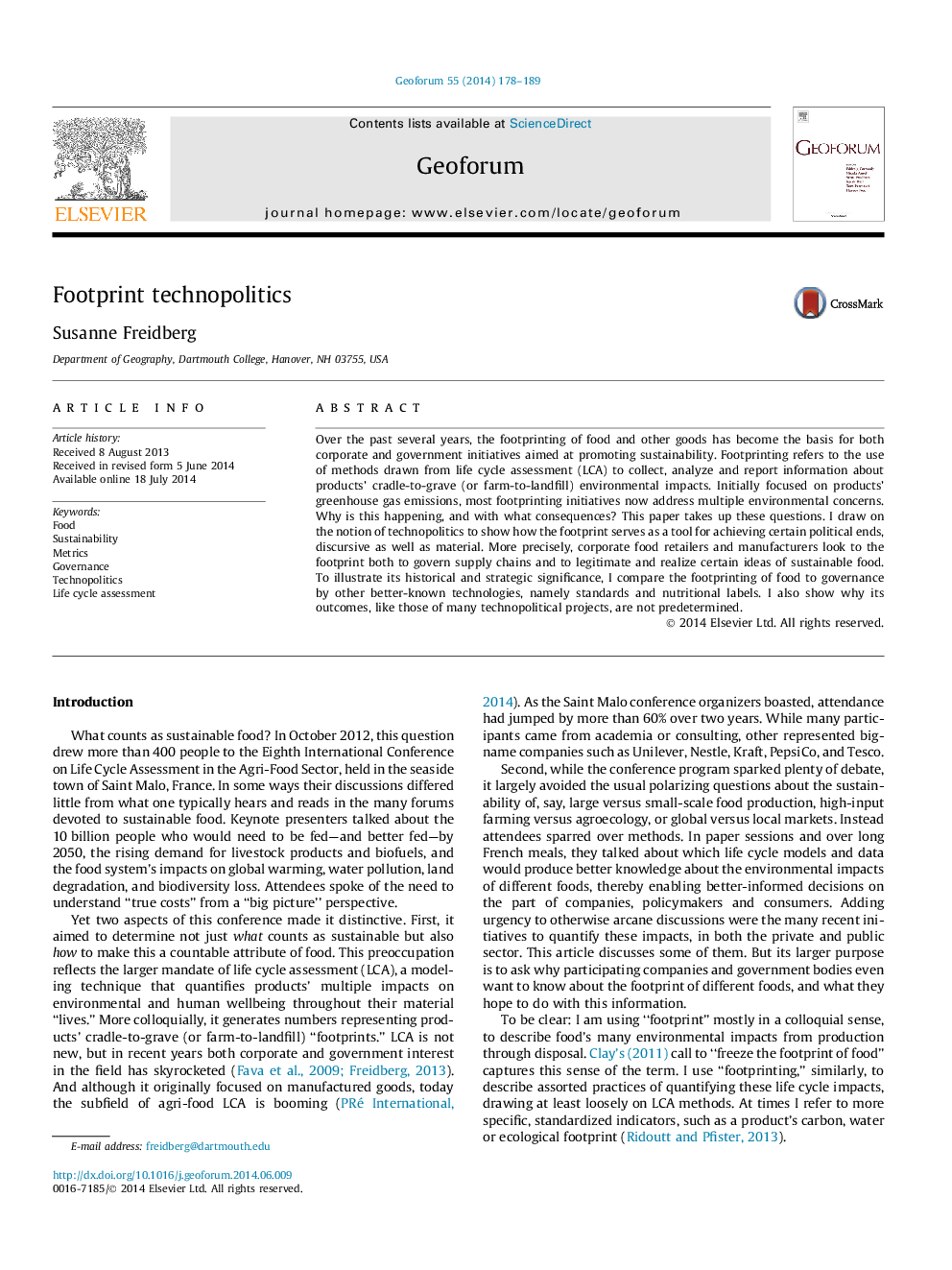| کد مقاله | کد نشریه | سال انتشار | مقاله انگلیسی | نسخه تمام متن |
|---|---|---|---|---|
| 5073887 | 1477134 | 2014 | 12 صفحه PDF | دانلود رایگان |
- The article examines the rise of life cycle assessment (LCA) as a tool for “footprinting” food.
- It shows how food manufacturers and retailers use life cycle metrics to govern supply chains.
- It compares footprinting to supply chain standards and nutritional labels.
- This comparison highlights the footprint's discursive and material power.
- As a governance tool, LCA merits more scrutiny from geographers and other social scientists.
Over the past several years, the footprinting of food and other goods has become the basis for both corporate and government initiatives aimed at promoting sustainability. Footprinting refers to the use of methods drawn from life cycle assessment (LCA) to collect, analyze and report information about products' cradle-to-grave (or farm-to-landfill) environmental impacts. Initially focused on products' greenhouse gas emissions, most footprinting initiatives now address multiple environmental concerns. Why is this happening, and with what consequences? This paper takes up these questions. I draw on the notion of technopolitics to show how the footprint serves as a tool for achieving certain political ends, discursive as well as material. More precisely, corporate food retailers and manufacturers look to the footprint both to govern supply chains and to legitimate and realize certain ideas of sustainable food. To illustrate its historical and strategic significance, I compare the footprinting of food to governance by other better-known technologies, namely standards and nutritional labels. I also show why its outcomes, like those of many technopolitical projects, are not predetermined.
Journal: Geoforum - Volume 55, August 2014, Pages 178-189
